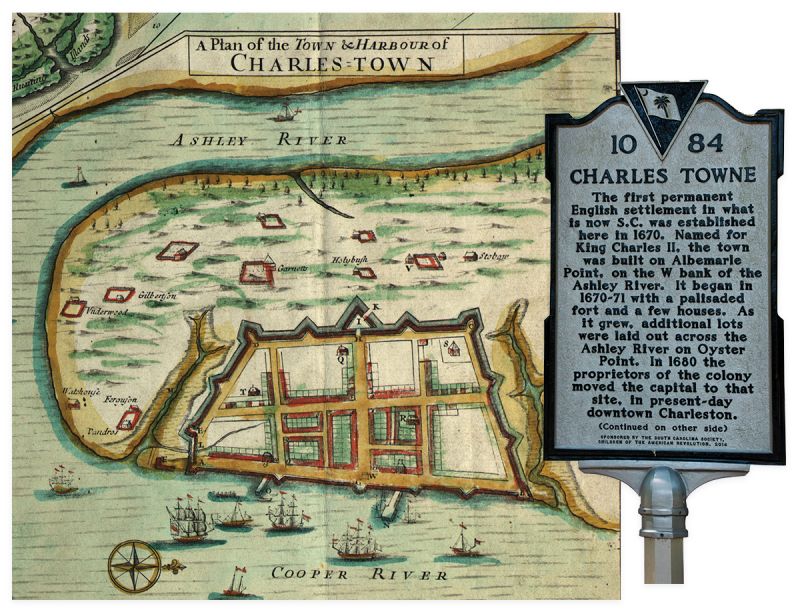The settlement known as Charles Town became a legal entity on August 13, 1783

An early map of Charles Town before it was incorporated; (inset) the historic marker at Charles Towne Landing, where the city was first settled.
There are rarely balloons or cakes with candles, seldom brass bands or fireworks, but August 13 is a day worth celebrating in Charleston. It is, after all, our city’s official birthday.
Charles Town, sometimes spelled Charles Towne, may have been founded and settled on an unknown date in April 1670, but it did not legally exist until it was incorporated in 1783. Before that, it had been the capital of a royal colony with no powers of its own. After the revolution, the new state government recognized “the city’s growing importance, both with respect to increase in inhabitants and an extensive commerce with foreign nations, it is indispensably necessary that many regulations should be made for the preservation of peace and good order.” Thus, amid heated political debates in the very hot month of August, John Lloyd, president of the state Senate, and Hugh Rutledge, speaker of the House, signed the bill making the city official, with a new name (Charleston) and its own rules and boundaries.

(Left) A document showing the incorporation of the city with its new name in August 1783; (Right) The city seal atop City Hall.
Ward lines were established; each of the 13 districts got a warden (today’s city council representatives); and an intendant (or mayor) was to be elected. The first mayor, Richard Hutson, was elected on September 1 and is remembered with Hutson (often misspelled “Hudson”) Street.
New laws gave leaders power, and the city created its official seal. On it, the Exchange Building is flanked by St. Michael’s and St. Philip’s. A woman, a personification of the city, extends her arm toward the harbor, and a ship behind her exemplifies the city’s commerce and her connection to the sea. The Latin in the ribbon above, “Aedes mores juraque curat,” translates as “she guards her buildings, customs, and rights.”
When Mayor Ashmead Courtenay, a historian, had the seal reconfigured circa 1880, he changed the Latin at the bottom from “Corpus Politicum” (or body politic) to “Civitatis Regimine Donata A. D. 1783,” which means “given to the rule of the citizens” and notes the year of the incorporation. Happy birthday, Charleston!